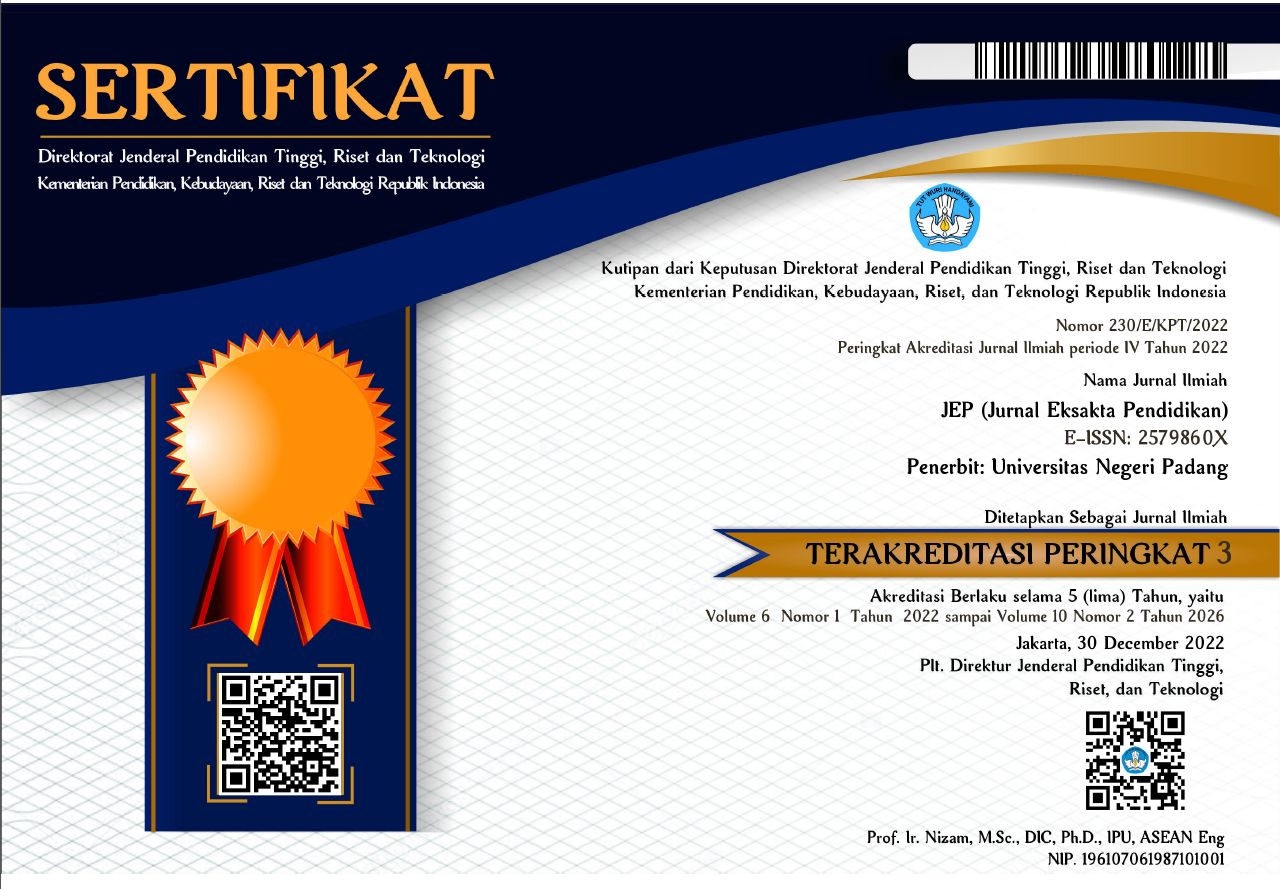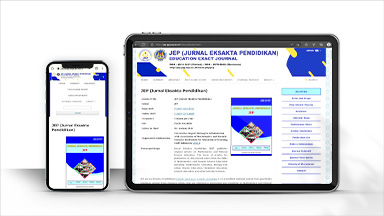Pengembangan Model Rekonstruksi Pendidikan pada Bahan Ajar Sel Elektrokimia Berbasis Green Chemistry
Abstract
This study aimed to analyze the construction of teaching materials which are relevant to daily life using the theme of green batteries. The method used the model of educational reconstruction as a framework. This model consisted of three components, which are: analysis of content structure, re-search on teaching and learning, and development of learning settings. The discussion in this study was focused only on the analysis of content structure which required three stages, they are: analysis of literature, clarification of basic context, and modification of the text. First stage would produce indi-cators and learning objectives for cognitive and affective domains, which were based on the content of electrochemistry cells, the context of Li-ion batteries, and the scientific literacy. Second stage was the elementarization process of elektrokimiaic cell content and Li-ion batteries context. Third stage was the process of insertion and abolition of original text to become basic text. Validation through expert judgments was conducted for indicators and learning objectives of cognitive and affective domains based on the Standard of Competence, Basic Competence and competencies in PISA 2009.
Downloads
References
Arikunto, S. 2008. Dasar-dasar Evaluasi Pendidikan. Jakarta: Bumi Aksara.
Cann, M. 2009. “Greening the Chemistry Lecturer Curriculum: Now is the time to infuse Existing Mainstream Textbooks with Green Chemistry”. Journal of American Chemical Society. 93-100.
Duit, R.1995. A Model of Educational Reconstruction. San Fransisco : Paper of Research in Sains Teaching (NARST).
Duit, R. 2007. Science educational research internationally: Conception, Research method, Domain research. Eurasia jurnal of mathematics. ISSN:1305-8223.
Duit, R., Gropengierber, H., Kattmann, U., Komorek, M., Parchmann, I. 2012. The Model of Eductional Reconstruction - A Framework for Improving Teaching and Learning Science. Science Research and Practice in Europe. ISBN :978-94-6091-900-8.
Hayat, B dan Yusuf, S.2010. Mutu Pendidikan. Jakarta: Bumi Aksara.
Holbrook, J. 2009. “Meeting Challenges to Sustainable Development through Science and Technologi Education”. Journal of science education international. 20, (1), 44-59.
Klingshirn, M, et al. 2009. “Integrating Green Chemistry into the Introductory Chemistry Curriculum”. Journal of American Chemical Society. 79-91
Lawshe. 1975. A Quantitative Approach to Content Validity. Journal Personnel Psycology. 28, 563-575.
OECD 2009. PISA 2009 Assessment Framework Key competencies in reading, mathematics and science. [online].
Tersedia:http:// www.oecd.org/dataoecd/11/40/44455820.pdf [10 September 2012].
Tundo 2001. Green Chemitry Education. Poster presented at the IUPAC congress/General Assembly.

This work is licensed under a Creative Commons Attribution 4.0 International License.




_(2579-860X).png)
_(2614-1221)1.png)




